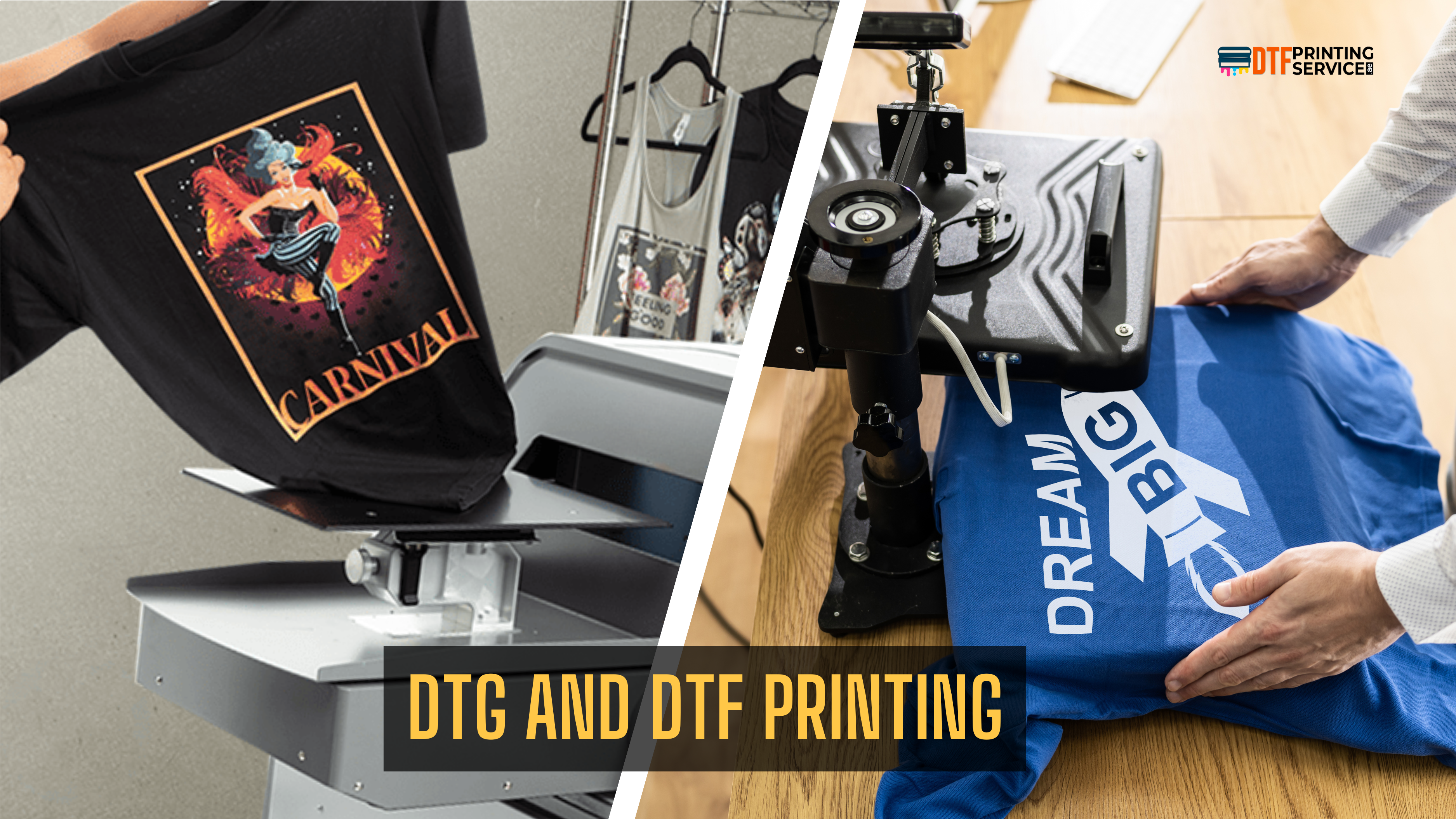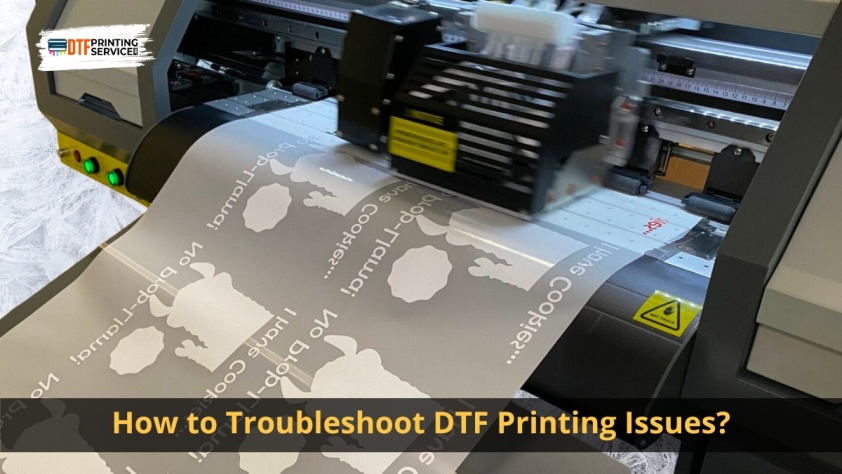In the fast-paced world of garment printing, achieving the perfect balance between quality and efficiency is paramount for businesses striving to stay ahead. Enter two leading contenders in the realm of textile printing: Direct-to-government (DTG) and Direct-to-Film (DTF) techniques. These cutting-edge methods have revolutionized the industry, offering unparalleled possibilities for creating vibrant, detailed designs on a variety of fabrics. Imagine a scenario where every garment produced boasts impeccable print quality, capturing the attention of onlookers with its stunning clarity and vibrancy. Now, envision achieving this level of perfection while maximizing production efficiency, ensuring that orders are fulfilled swiftly without compromising on quality. This is the tantalizing promise of DTG and DTF printing techniques.
In our quest to unravel the secrets behind maximizing quality and efficiency in garment printing, we delve deep into the world of DTG and DTF. From the intricate intricacies of print quality to the lightning-fast pace of production, we explore how these techniques stack up against each other and uncover the unique advantages they offer to businesses striving for excellence in the competitive market landscape.
Textile Printing’s Evolution
Textile printing, an ancient craft spanning civilizations across history, has undergone remarkable change over time. Beginning as early methods such as hand block printing to today’s advanced digital techniques and beyond – textile printing has come a long way through human creativity and technological progress. Digital printing marked an essential shift that introduced speed, precision, and versatility not previously achievable through traditional means.
Introduction of DTG and DTF as Modern Solutions in Textile Printing
Direct to Garment (DTG) and Direct Film (DTF) printing technologies were among the first digital solutions introduced, ushering in an age of creativity and efficiency in textile design. DTG printing revolutionized textile design through direct inkjet application; producing detailed images quickly for small batch orders at economical rates using inkjet technology. Meanwhile, DTF was an exciting game-changer by printing designs onto transfer film which can then be heat pressed directly onto fabric – offering unparalleled versatility across a range of textile materials; no longer just cotton!
An Overview of DTG and DTF Technologies
As with anything related to money or power, money will always have its price in terms of both time and resources invested. But we shouldn’t allow it to prevent us from enjoying life to its full potential! This distinction emphasizes the significance of comparing DTG and DTF; both technologies represent cutting-edge digital printing innovation, but each offers specific benefits and applications to businesses and designers looking for guidance when it comes to textile printing technology.
Comparing DTG and DTF aren’t simply academic exercises – they represent essential initiatives for anyone invested in the textile industry’s long-term viability. By understanding the capabilities, limitations, and optimal use cases for each technology available today, stakeholders can make more informed decisions that leverage its unique benefits – driving innovation, efficiency and sustainability within textile printing processes. Thus, choosing between them doesn’t just involve picking one printing technique, it means shaping the textile’s future!
Understanding DTG Printing
Direct-to-garment (DTG) printing is an innovative technique of inkjet technology that prints designs directly on garments using inkjet technology, producing highly detailed and vibrant images on various textile materials.
DTG Printing Process: Pre-Treatment: Before DTG printing, each garment is first pre-treated with an adhesion solution designed to ensure proper adhesion of ink onto fabric.
Printing: Designs are applied directly onto clothing using DTG printers that apply layers of ink in layers.
Curing: After printing, garments must be heated to set and maintain the durability of ink printings.
Post-treatment: Some garments may require post-treatment processes like steaming or washing to maximize print quality and ensure the durability of their print design.
Advantages of DTG Printing:
High-Quality Prints: Digital textile printing provides high-resolution prints with vibrant colors and intricate details, which makes DTG ideal for complex designs.
No Minimum Order Quantity Required: DTG printing allows for cost-efficient production of small volumes – ideal for customized garments that feature personalized or special messages.
Quick Turnaround Time: Direct to Garment printing requires minimal setup, which results in quicker production times compared to other printing methods.
DTG printing uses water-based inks which are more eco-friendly than their solvent counterparts.
Soft Feel: Digital T-shirt printing produces prints with an inky, velvety surface because its ink penetrates fabric rather than sitting atop.
Limitations of DTG Printing
Limitations in Color Range: Due to limitations associated with ink technology, DTG printing may not always produce colors exactly matching those seen on your screen.
DTG Printing Isn’t Appropriate for All Fabrics: DTG printing works best when applied to 100% cotton or cotton-blend fabrics; polyester or nylon materials may not be advisable.
Cost: DTG printing may be cost-effective for smaller orders; however, large production runs may not find this printing method to be as cost-effective as alternatives such as offset.
Print Durability: While advances have been made, DTG prints may not last as long when subjected to frequent washing and wear, particularly on garments exposed to frequent washes and wear cycles.
Ideal Use Cases of DTG Printing:
Custom Apparel: DTG printing provides the ideal way to produce customized apparel items such as T-shirts and hoodies with personalized designs.
Businesses using: DTG printing for promotional purposes can utilize tote bags, hats and sweatshirts with their brand for use as giveaways to their target audiences.
Fashion designers and clothing brands: alike can use DTG printing technology to produce limited edition collections with intricate and creative designs using DTG.
Photo Apparel: Direct to Garment printing allows direct photo prints onto garments for personalized gifts and memorabilia creation, creating personalized items with lasting memories for loved ones and events alike.
DTG printing provides an effective, versatile, and cost-efficient means of imprinting high-quality designs onto garments. Its limitations do make DTG an appealing solution for businesses and individuals looking for cost-efficient yet customizable printing solutions.
Comparative Analysis between DTG and DTF Technologies
Direct-to-garment (DTG) printing and Direct-to-Film (DTF) printing are two popular techniques used for imprinting designs onto garments, each offering distinct benefits and drawbacks, making each an appropriate solution depending on a given printing need. We explore further below the differences and similarities of both technologies across several key dimensions of comparison between DTG and DTF printing methods.
Print Quality Comparison:
DTG Printing Direct to Garment (DTG) printing has long been used to produce stunningly clear prints with vivid colors and intricate detail, directly absorbed into fabric fibers by direct thermal transfer ink printing technology. DTG printing provides seamless blend-in prints that easily integrate with garment surface textures for seamless results that accurately reproduce artwork using multiple hues or complicated details. DTGS is especially beneficial when reproducing complex artwork like multicolored images that need multiple ink colors with intricate detailing like multidimensional painting techniques or artwork with intricate colors/detailing artwork faithfully from source materials – and DTG can reproduce even complex artwork faithfully!
DTF Printing:
Like DTG printing, DTF provides excellent print quality with crisp details and vibrant hues. However, as opposed to its DTG counterpart, this method involves printing onto film which then transfers onto clothing using heat and pressure; although these prints can achieve high resolution resolution levels similar to their DTG counterparts they may lack full fabric integration resulting in slightly different textures or appearance.
Efficiency and Speed:
DTG Printing:
Direct to Garment (DTG) printing has long been considered an efficient and quick means of producing small to medium sized production runs, thanks to minimal setup requirements and the lack of needing screens or plates – it quickly produces prints on demand, unlike larger production runs which may take more time due to inherent limitations within its printing process.
DTF Printing:
Digital Transfer Fabric (DTF) printing can be an efficient solution for both small and large production runs, since its printing process itself is relatively fast – multiple prints can even be produced simultaneously! Unfortunately, however, transferring film onto garments might extend production timelines significantly when producing intricate designs.
Cost-Effectiveness of DTG Printing:
DTG printing can be cost-effective for shorter runs due to its on-demand nature and minimal setup fees; however, as ink and maintenance expenses accumulate over time the per-print cost could rise accordingly.
DTF Printing:
By contrast, DTF printing tends to be cost-effective for both small and large production runs, offering relatively lower print costs with minimal upkeep costs; additionally, these printers typically boast lower initial investment costs when compared with their DTG counterparts.
Flexible Materials and Fabrics:
DTG Printing:
Direct to Garment (DTG) printing works best on 100% cotton or cotton-blend fabrics; however it may work on certain polyester types as well. DTG may not work on all fabric types with high synthetic content though and some fabric types may require pretreatment before being DTG printed.
DTF Printing:
One of the great strengths of digital textile printing (DTF printing) lies in its adaptability to the materials and fabrics used. DTF can print onto cotton, polyester, nylon, and even leather substrates making this method suitable for various industries and applications.
Environmental Implications of DTG Printing:
DTG printing utilizes water-based inks which are more eco-friendly than their solvent counterparts, and its on-demand nature minimizes waste through reduced inventory costs and thus adding another eco-friendly element to DTG’s eco-friendliness profile.
DTF Printing:
Similar to offset printing, DTF uses water-based inks which contributes to its environmental footprint; however, the use of film may produce waste if its full potential isn’t realized during printing process.
Maintenance and Ease of Use:
DTG Printing:
For optimal performance and print quality, DTG printers need regular maintenance in the form of cleaning printheads. Keeping ink levels balanced, calibrating as necessary, and calibrating printer settings as required. Although DTG printing itself may seem straightforward enough, operators may require training to operate this equipment effectively.
DTF Printing:
Direct-to-fabric (DTF) printers tend to require minimal upkeep for optimal operation, with printing usually consisting of printing designs onto film for transfer onto garments using heat presses. As with all printing equipment, however, DTF printers may occasionally require maintenance and calibration services as required by any printing equipment vendor.
Both DTG and DTF printing methods present distinct advantages when it comes to transfer designs onto garments, with DTG offering superior print quality for smaller production runs while DTF provides greater material versatility, cost efficiency, and overall operational efficiencies for larger-scale operations. Which method you opt for ultimately depends upon project requirements, budget considerations and desired outcomes.
DTF Printing’s Rising Importance in Healthcare Facilities
Direct-to-film (DTF) printing has recently seen tremendous momentum within the textile printing industry due to some key factors driving its rapid adoption across different industries. DTF offers several distinct advantages over its Direct-to-Garment (DTG) predecessor, which have led to its widespread implementation across various fields and businesses alike. Let us examine why DTF has gained such widespread adoption, examine case studies of industries adopting it, and assess its future potential within textile printing.
Factors Drive DTF Printing Popularity:
The versatility of Materials: DTF printing provides greater versatility when it comes to materials than DTG. Support for polyester, nylon, and leather fabrics in addition to cotton allows. Businesses to meet a greater variety of customer demands and expand their product offerings.
Cost-Effectiveness: DTF printing may be more cost-efficient for larger production runs than DTG. Its process involves printing designs onto film for transfer to garments via heat and pressure. Leading to lower ink consumption as well as production costs per item and making. This is an appealing option. Businesses seeking to reduce operational expenses.
Print Quality and Durability: DTF printing provides high-resolution prints with vibrant colors. They have excellent durability, adhering firmly to fabric surfaces for long-term results even after multiple washes or wear cycles. This feature makes DTF ideal for industries such as sportswear, workwear, and fashion where garments require frequent washings or use.
Ease of Use and Scalability: DTF printing equipment is extremely user-friendly. Enabling businesses of any size to utilize its use effectively and with confidence. Furthermore, its versatile printers can accommodate small production runs. As efficiently as large production runs – meeting diverse demand levels efficiently while streamlining print processes. Efficiently and adapting quickly to market changes.
Case Studies of Industries Adopting DTF over DTG
Sportswear Industry: Manufacturers in the sportswear industry have increasingly adopted DTF printing due to its superior durability and versatility. Such as when one leading athletic apparel brand switched over from DTG printing for their performance jerseys to DTF. As it provides higher print quality with longer durability compared to DTG print techniques.
Fashion and Apparel Brands: Numerous fashion and apparel brands have used DTF printing as part of their production. Workflow to produce premium-quality garments with intricate designs using DTF. One such luxury label made use of it on limited-edition silk dresses from its limited collection. DTF achieved exquisite detailing, vibrant colors, and vivid finishes on these silk pieces utilizing DTF technology.
Promotional Products Sector: Companies offering promotional merchandise have also taken advantage of DTF printing to offer customized merchandise to clients. By harnessing DTF technology, these businesses can produce high-quality merchandise. Such as bags, caps, and accessories in quick turnaround time at cost-effective pricing.
Future Prospects of Direct Textile Printing with DTF: Textile
DTF printing’s prospects in textile printing seem promising, driven by advances in technology. And an ever-increasing market demand for innovative printing solutions. As DTF printing develops and matures we can expect:
DTF printing may find additional applications beyond apparel, including home textiles, automotive interiors, and signage. With its versatility in printing onto various substrates. This method opens doors for diverse industries seeking customized yet high-quality printing solutions.
Integration of Digital Technologies: Integrating cutting-edge digital technologies like artificial intelligence (AI) and augmented reality (AR). DTF printing could revolutionize how textile designs are created and printed, providing personalized. Printing experiences while increasing the product appeal of DTF-printed textile products.
Sustainable Printing Practices: In response to increasing awareness surrounding sustainability issues. DTF printing may adopt eco-friendly printing materials and practices to minimize its environment. Footprint and drive market demand among environmentally conscious customers and businesses for products printed using this process. This could spur greater sales for printed DTF items on store shelves.
DTF printing’s rising prominence within the textile printing industry can be explained by its versatility. Cost-effectiveness, print quality, and ease of use. As evidenced by case studies and prospects. It appears DTF is set to play an influential role in shaping its future; offering businesses innovative solutions. Tailored specifically towards meeting evolving customer expectations and market trends.
Summary of Key Findings From Comparison:
Comparative analyses between Direct-to-Garment (DTG) printing and Direct-to-Film (DTF) printing have yielded several key findings. Both methods produce top-quality prints, though DTG excels at seamlessly incorporating prints into the fabric. While DTF offers precise details with different textures. Second, DTG works best for small to medium production runs while DTF offers advantages for both large- and small-scale operations.
Thirdly, while DTG may prove cost-effective for smaller quantities, it becomes the more economical choice with larger orders. DTF provides more material and fabric flexibility compared to DTG and thus can accommodate a broader array of applications. Than its rivals. Both methods have environmental advantages thanks to using water-based inks; however. Due to film usage, DTF may produce slightly more waste.
Reaffirming the Importance of DTF in Today’s Market:
DTF printing’s increasing prominence highlights its value in today’s marketplace. Thanks to its flexibility, cost-efficiency, and superior print quality. This form of printing makes an appealing proposition for businesses across various industries. DTF’s ability to print on various materials and fabrics opens up opportunities for innovation and customization catering to customers. Preferences across industries; furthermore, its scalability makes it accessible across sectors making adoption inevitable as consumer tastes evolve further. As consumer preferences develop further, DTF provides businesses with efficient printing solutions that meet changing. Consumer preferences efficiently – an edge necessary in today’s dynamic marketplace!
Conclusions:
Our examination of DTG and DTF printing technology demonstrates their respective strengths and advantages. DTG offers seamless integration and efficiency for shorter runs while DTF excels at versatility. Cost-effectiveness, and scalability in larger operations. DTF has become increasingly relevant within current markets because of its superior print quality, flexibility, and accessibility features; furthermore. Its evolution will revolutionize textile printing technologies. To offer businesses innovative solutions tailored specifically to evolving consumer expectations and market trends with efficiency and impact.



